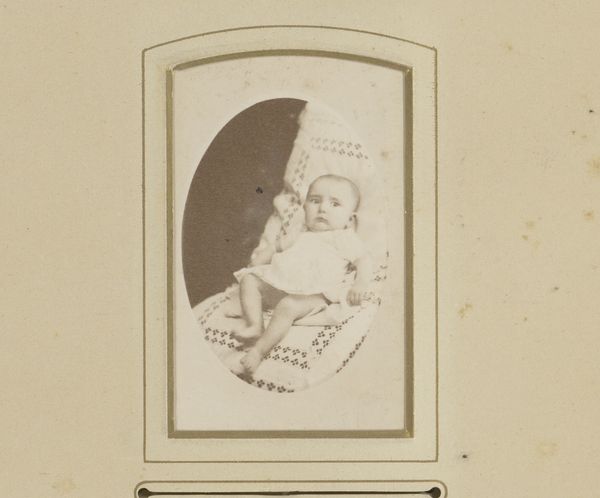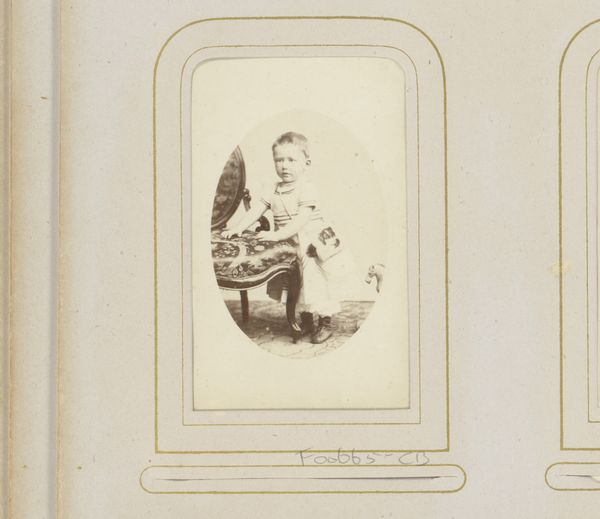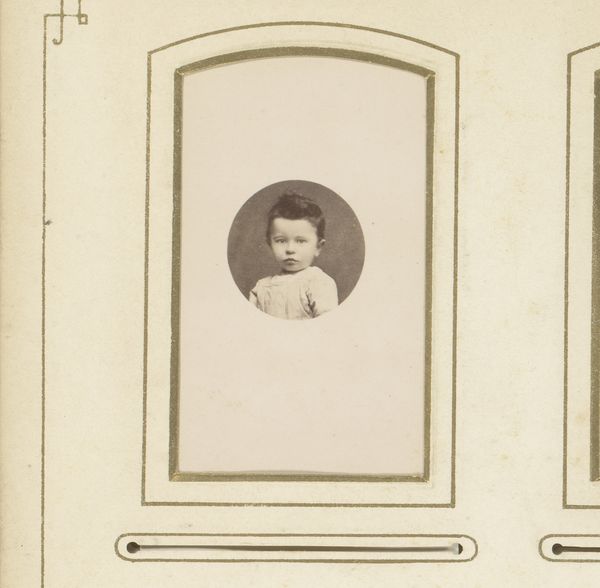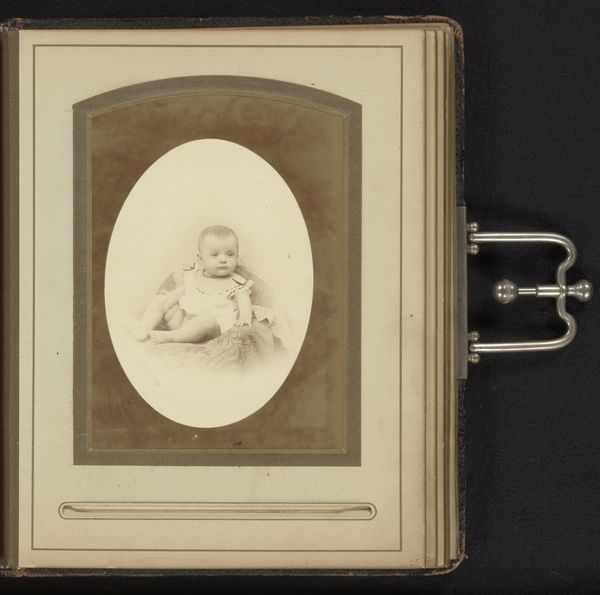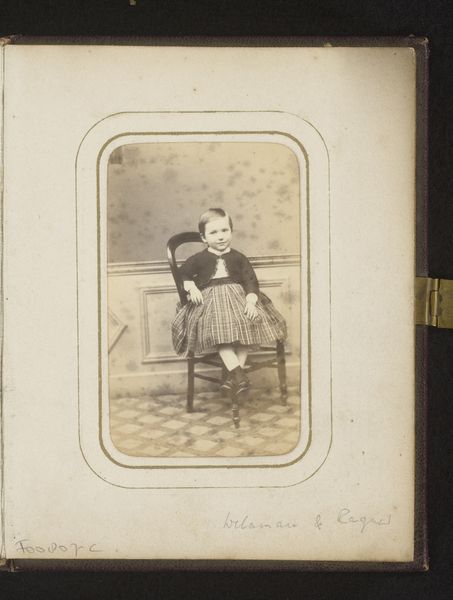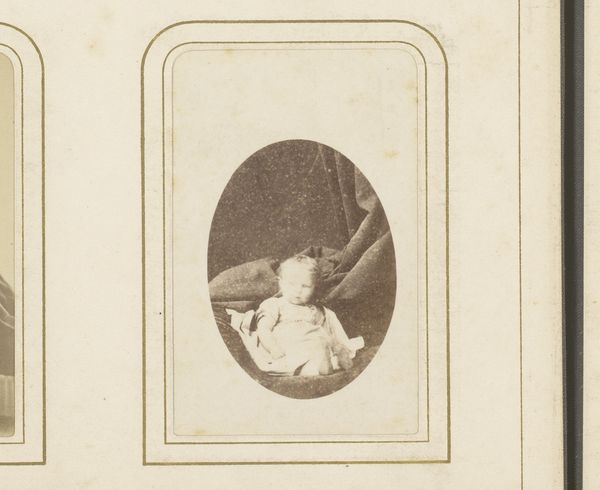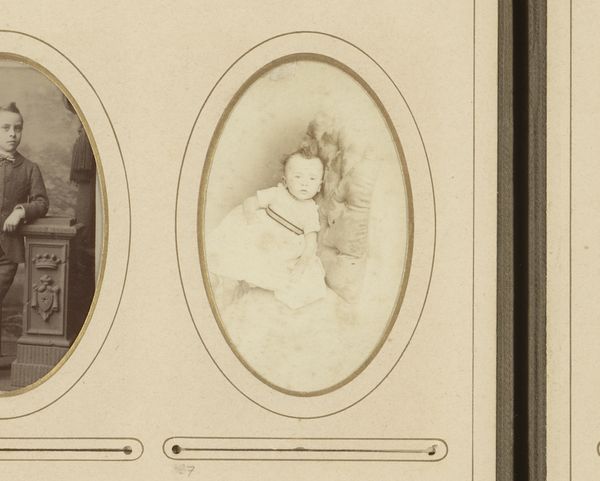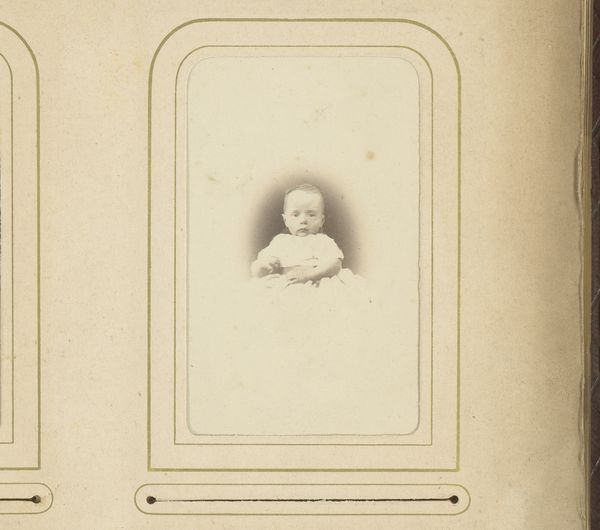
photography, albumen-print
#
portrait
#
sculpture
#
charcoal drawing
#
photography
#
charcoal
#
watercolor
#
albumen-print
#
realism
Dimensions: height 82 mm, width 50 mm
Copyright: Rijks Museum: Open Domain
Editor: This is "Portrait of toddler Johan Everwijn with toy horse," made between 1867 and 1890 by Johannes Ephraim, using the albumen print technique. There's a distinct formality to the image; the child and the toy seem posed, creating a sense of distance. How do you interpret this work? Curator: That formality speaks volumes, doesn't it? The child's posture, the staged setting… we need to consider the social context of the late 19th century. Photography was becoming more accessible, yet it still held an air of prestige, especially for portraits. This image captures not just an individual, but a constructed ideal of childhood innocence and bourgeois values. What does the child's clothing suggest to you? Editor: I see it's ornate, almost a miniature adult's garment, rather than play clothes. Curator: Exactly. The clothing, the rocking chair – these aren't accidental. They are carefully chosen props signaling the family's aspirations and status. Consider the implications: what narratives are being prioritized, and whose childhood experiences are being left out? Editor: It highlights the power dynamics present, even in childhood representations. This isn't just a cute kid with a toy, it's a statement about class and privilege. Curator: Precisely! And understanding those power dynamics helps us see beyond the surface sentimentality often associated with childhood images. These kinds of formal portraits also dictated acceptable roles for young boys like Johan in a society very different from ours, raising issues about expectations, social identity, and the gaze of the parents. Editor: I had not considered all of that, but I appreciate that you highlighted that this work encourages a critical awareness about the historical frameworks and societal norms surrounding childhood and representation. Curator: Absolutely!
Comments
No comments
Be the first to comment and join the conversation on the ultimate creative platform.

